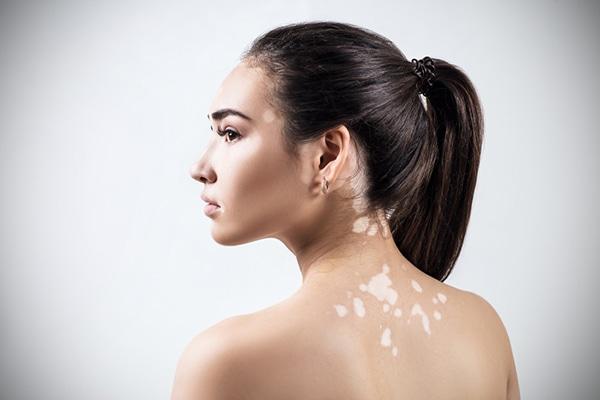What is Vitiligo?
Vitiligo is a disease that is characterized by the fact that the immune system of the sufferer destroys the cells that produce melanin, which are the ones that color our skin, hair, and eyes. As a result, certain areas of the skin remain unpigmented, that is, white. Although the cause of melanocyte destruction is not known exactly, Vitiligo is usually more prevalent in people with autoimmune diseases and may have an inherited component.
This non-serious and contagious disease can affect anyone, but it is mostly diagnosed before the age of 40.
The stains usually appear in areas of the skin exposed to the sun. For this reason, the disease can make many people uncomfortable in their own body, affect their self-esteem, and hinder their work, family, and affective relationships. Even today Vitiligo stigmatizes those who suffer it socially.
Types of Vitiligo
Vitiligo can occur in different ways:

Focal Vitiligo: light white spots segmented by the body appear, mainly in the sun-exposed parts.
-segmental Vitiligo: stains occur only on one side of the body.
-Acrofacial Vitiligo: the stains are around the mouth, eyes and nose. They also appear on the hands and feet.
-Universal Vitiligo: the stains are large and appear all over the body.
Symptoms of Vitiligo
Typical symptoms of the disease include:
-irregular loss of skin color. It usually appears first on the hands, face, genitals and in areas around the body openings.
-the appearance of premature gray hair. Also on the eyelashes, eyebrows or beard.
-the inside of the mouth and nose lose their characteristic color and become off-white.
Treatment of Vitiligo
Unfortunately, this disease has no cure. However, there are treatments to prevent discoloration from going further. Topical corticoids, calcineurin inhibitors, and phototherapy are usually given.
A very important thing is that, in the absence of pigmentation, these areas of the skin are very vulnerable to the ultraviolet rays of the sun, so you have to protect yourself very well with high sunscreen creams and clothing. Those affected should be extremely careful with sunbathing, when on the mountain, on the beach and avoid tanning booths. It is obvious to think that if the unaffected skin is lighter, the stains will be less appreciated and if it is darker they will notice more.
Phototherapy that is applied under medical supervision consists of a narrowband ultraviolet B light that seeks to return pigmentation to white spots. Other times it will be easier to detach the unstained areas of the skin because they occupy less than the stained ones.
Vitiligo is a very unknown disease and it is not certain how it will progress. Sometimes, stains disappear without treatment, but in most cases they end up spreading throughout the body.


